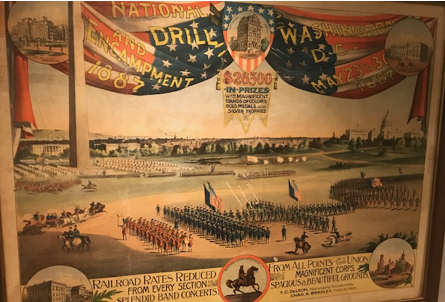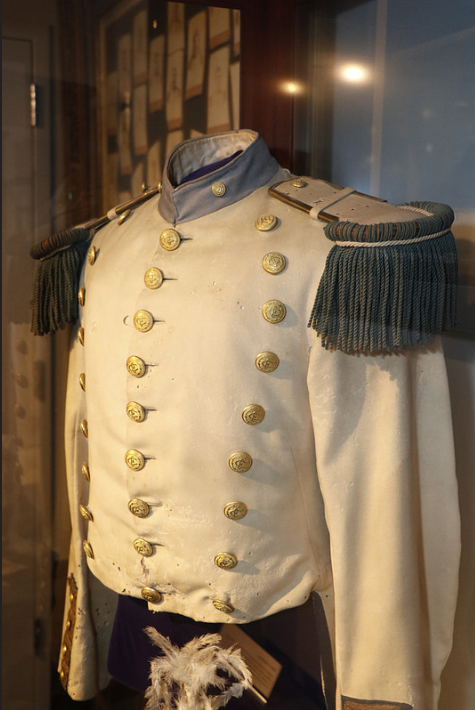 The Residence Act of 1790 established that the country would create a new capital city rather than selecting an existing city. In 1801, The Organic Act designated Washington, D.C. as the capital of the United States and put its governance under the control of Congress. Which militia would protect a city without a governor and under the control of Congress?
The Residence Act of 1790 established that the country would create a new capital city rather than selecting an existing city. In 1801, The Organic Act designated Washington, D.C. as the capital of the United States and put its governance under the control of Congress. Which militia would protect a city without a governor and under the control of Congress?
The D.C. National Guard came about in part due to the efforts of President Thomas Jefferson, the first President to spend his term in D.C. He came into office during a time when strife between the two major political parties was threatening to tear the new country apart. Soon, the Commanding Generals of the two closest militia units were members of President Jefferson’s rival political party. At this point, there was only a very small regular army, and they were mostly patrolling the border. If one of the state militias were to try to force political will, there would be no way to keep them from marching on the Capitol and coercing—or even overthrowing—the government.
President Jefferson saw how vulnerable America’s democracy would be if the will of a military general could keep the legislative body from enacting the will of the people. To prevent this, he created the D.C. National Guard. President Jefferson hand selected his new officer and in 1802, the D.C. National Guard held its first muster. The D.C. Guard is the only local National Guard with a national mission—to protect our Federal Government.

The Civil War
Maryland and Virginia were both slave states at the beginning of the war, surrounding Washington with potential enemy territory. Three days before the shots at Fort Sumter, President Lincoln called up the D.C. Militia to protect the capital, making it famous for being “the first man…first company…first regiment” called to duty for the Civil War.
The decision to fight to protect the Union was not unanimous, as three companies of D.C. Guardsmen fought for the Confederacy.
The D.C. National Guard saw an unfortunate first, when Private Manual C. Causten became the first Military Prisoner of War during the Civil War. D.C. National Guard Soldiers were on active duty for four years, fighting in the Battle of Manassas and the Valley campaign. They maintained their historical role as the Capital Guardians manning the forts which encircled Washington. At Fort Stevens, D.C. Militia Soldiers included African-American Quartermaster clerks who were originally not allowed to join combat regiments. As D.C. faced attack from the Confederate army, they were issued rifles and told to defend their city. President Abraham Lincoln traveled to view the fighting, where he was pulled from harm’s way by a D.C. Guardsman. It would be the only time in history that a standing president would face enemy fire.
Patriotic Fervor
During the post-Civil War years, public support for the D.C. National Guard was at a new high. Encampments were held on the National Mall. Parades and marching competitions were popular spectator events. Our rifle team was nationally known. Ceremonial Marching Units, such as the Corcoran Cadet Corps, known for their snappy uniforms and precision drill, were popular forms of entertainment. John Phillip Sousa, the march king, composed two marches for D.C. National Guard units.
Unique Law
Normally, American federal law specifically charges the U.S. National Guard with dual federal and state missions. As the U.S. federal government abolished the jurisdiction of the state of Maryland and states rights in Washington, D.C. to establish a federal district, there is no elected governor to command this guard unit. The District of Columbia National Guard is the only National Guard that reports only to the U.S. President.
Supervision and control of District of Columbia National Guard was delegated by the President of the United States to the Secretary of Defense pursuant to Executive Order 10030, 26 January 1949 with authority given to the Secretary to designate officials of the National Military Establishment to administer affairs of the District of Columbia National Guard. The Secretary of the Army was directed to act for the Secretary of Defense in all matters pertaining to the ground component, and the Secretary of the Air Force was directed to act in all matters pertaining to the air component of the District of Columbia National Guard by Secretary of Defense Memorandum, 2 February 1949.
The D.C. National Guard is the only United States military force empowered to function in a state or, in this case, a district status. Those functions range from limited actions during non-emergency situations to full scale law enforcement of martial law when local law enforcement officials can no longer maintain civil control. The National Guard may be called into federal service in response to a call by the President or Congress.
When the D.C. National Guard is called to federal service, the U.S. President serves as Commander-in-Chief. The federal mission assigned to the U.S. National Guard is "To provide properly trained and equipped units for prompt mobilization for war, National emergency or as otherwise needed.